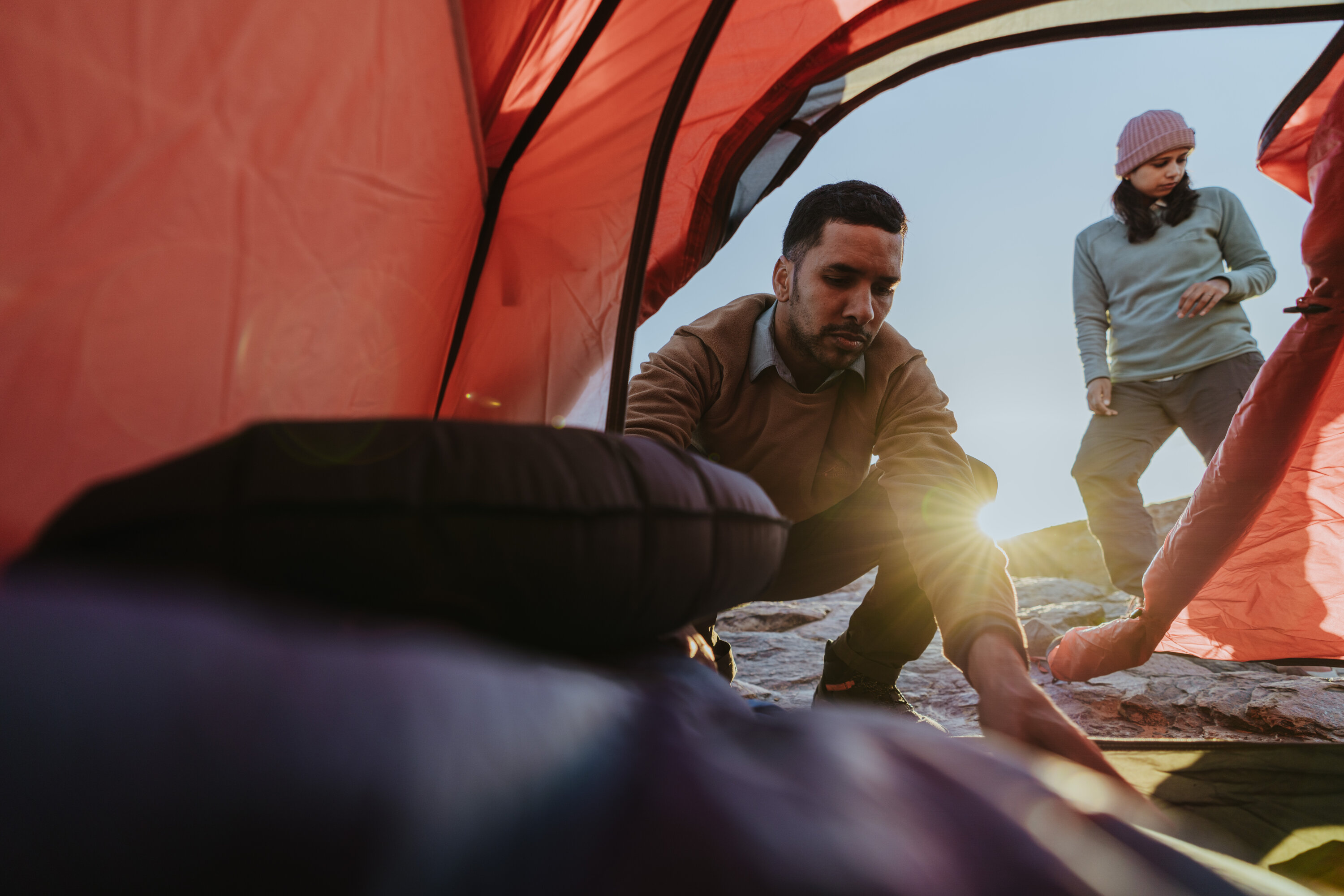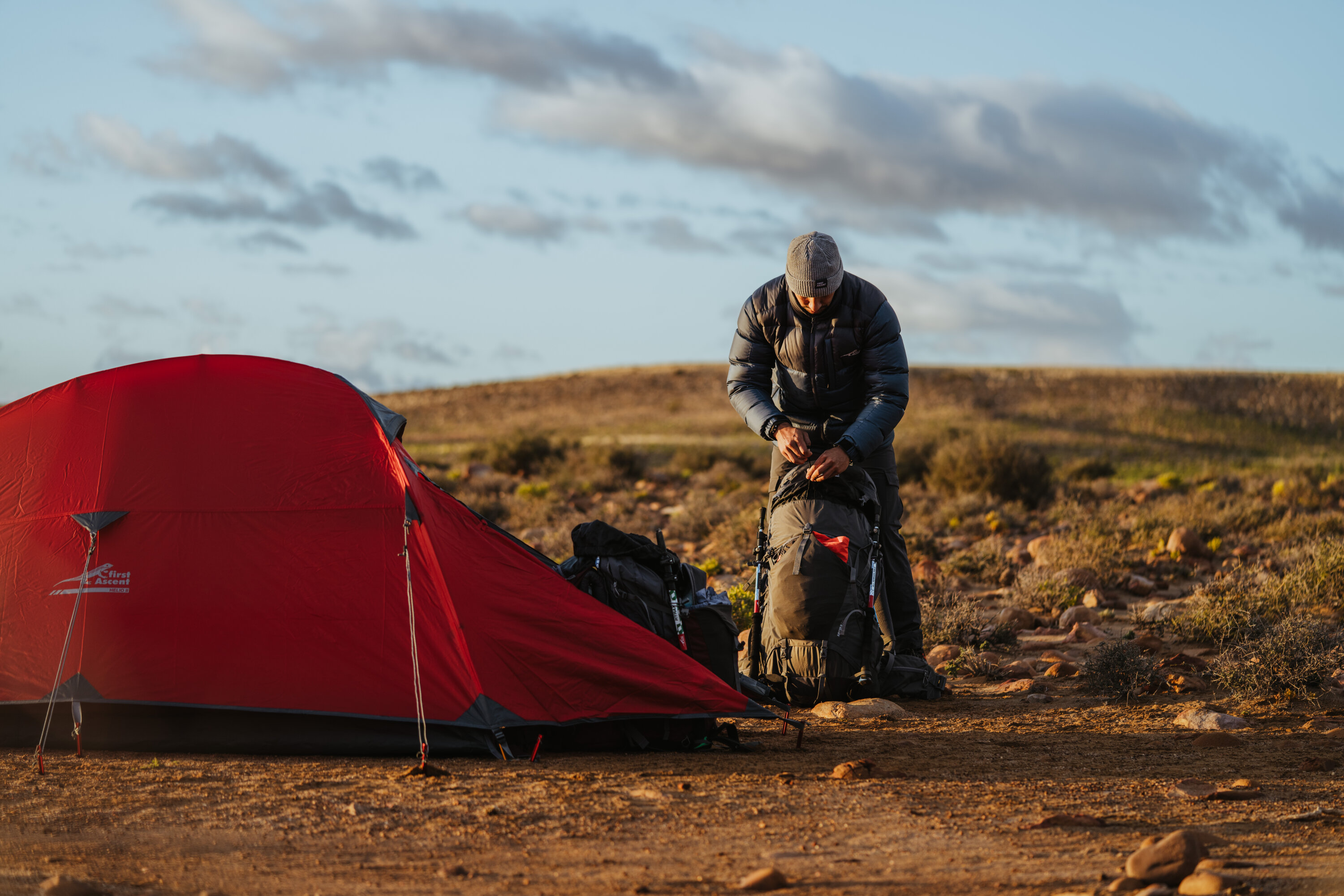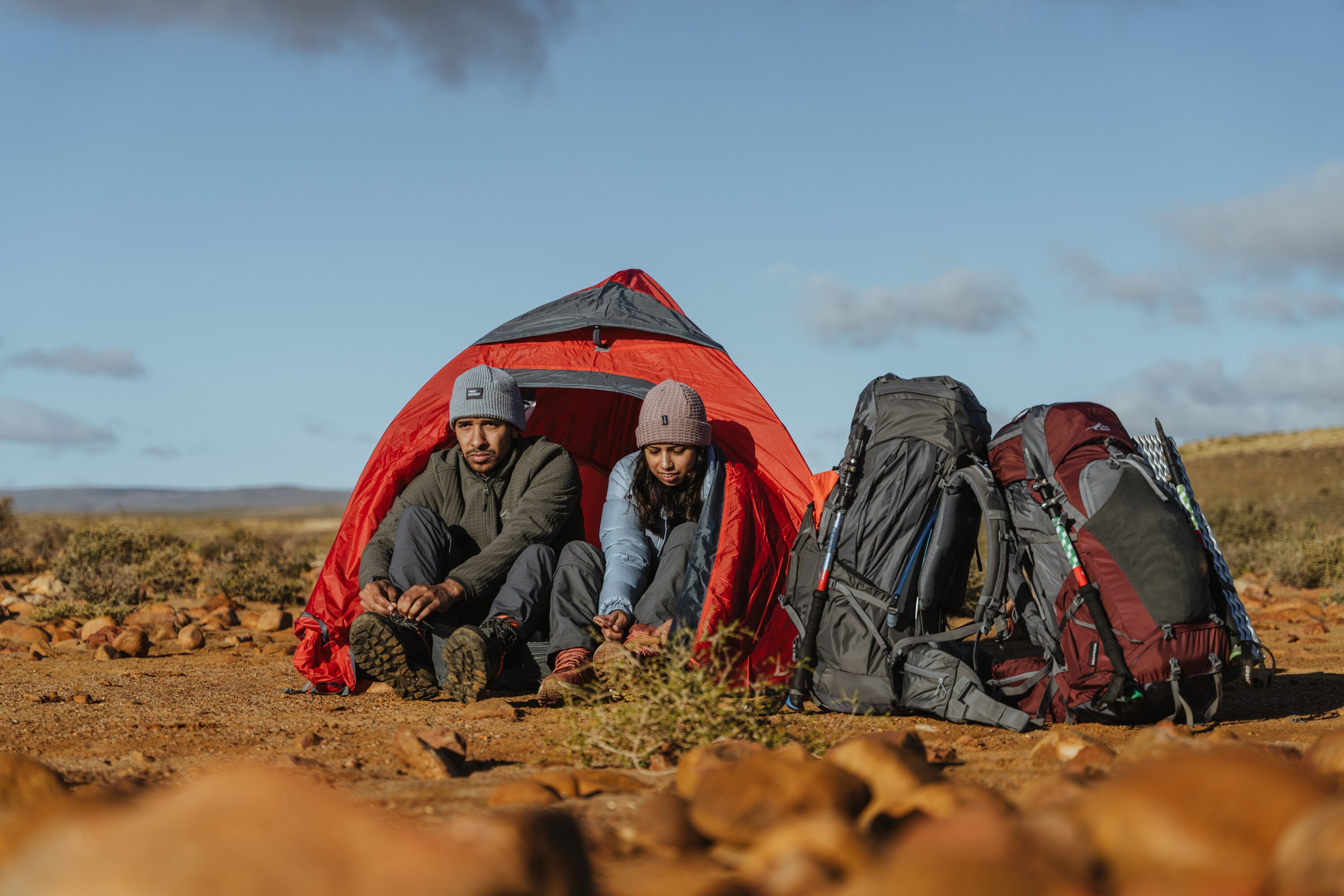Purchasing a tent can be a stressful process! Lucky for you, we’ve taken all the guesswork out of the buying process and have put together everything that you need to know when looking for your perfect tent. Your tent will be your shelter from the elements throughout your trip, so you want to ensure you stay dry, stoked, warm and comfortable. Whether you’re spending six cold nights in the Drakensberg, or adventuring through the Fish River Canyon during the height of summer, we have options to suit every adventure.
Some things to consider:
Activity
Ideally, you want a tent that you can use in multiple situations, but the rule of thumb is:
Hiking: lighter and smaller
Camping: more spacious and heavier
4-season/ Extreme weather: warmer and stronger
Conditions
It’s important to consider the weather during your trip to decide if your tent can withstand just moderate, or extreme, weather conditions. Make sure to check the wind speeds, temperature fluctuations and amount of rainfall for your chosen area. A tent that is suitable for a summer camping getaway in the Magaliesberg is not necessarily likely to hold its own in the dead of winter near Cape Town's West Coast. During overnight hikes, you definitely don’t want to compromise what may be your only form of shelter.
What’s the difference between a 3-season and 4-season tent?
A 3-season tent is designed for spring, summer, and autumn. They are typically not suitable for use in extreme winter weather, as they are made to be well-ventilated and light. This is due to the majority of the inner tent being made from lightweight mesh, in order to increase breathability in warmer conditions.
A 4-season tent is designed to withstand extreme weather conditions and temperatures, making it ideal for use in all four seasons. One of the key features of a 4 season tent is its robust construction. These tents are typically made from heavy-duty materials, such as nylon or polyester, which are both strong and durable. A dense floor and fly sheet are often essential features, due to a higher waterproofing application. This added thickness helps to insulate the tent and keep the interior warm in cold weather.
What’s the tent made out of?
The material of the tent affects the inside temperature and breathability. 3-season tents often feature mesh, which increases airflow and works well in preventing condensation. Mesh is also a light material. However, it may falter in heavy rain or wind conditions.
For a warmer tent, a thicker wall made of polyester or nylon provides greater insulation and protection from harsh elements. This material makes the tent heavier and bulkier to carry.
Weight
It’s important to consider the weight of the tent. Some organised camping and slackpacking trips may have a weight limit, or you may just want to keep your pack light and streamlined.
Size
The desired size of your tent depends on many factors. When hiking with friends, do you want to split the weight of a 2 or 3-person tent, or each carry a 1-person tent?
If you’re car camping, walk-in camping, base camping or at a festival where you don’t have to carry your tent far, consider a bigger tent. A one-man is a tight squeeze, which is not an issue when you’re aiming for a light load, but generally, the rule of thumb is to adjust a size up per person if you’re looking for comfort.
Shape and other features
Based on your activity, you also want to consider the shape and storage features of the tent.
What is the shape of the poles (which affects sturdiness)? How much storage does the tent offer? How many entrances does it have (so you don’t have to climb over your tent partner in the middle of the night)? All of these are personal choices to decide your level of comfort.
For example, consider the size of the tent’s vestibule (the gap between the inner and outer doors of the tent). The space offered by the vestibule will allow you to store your dirty hiking boots, pack and/or larger items outside of the tent whilst still under cover. It also makes the tent seem more spacious. Should you be stuck in rain or wind, the vestibule is a space that will allow you to cook and sprawl out whilst waiting out the bad weather.
What’s the difference?
1-Person
The Stamina 3 Season Hiking Tent is our lightest and most compact tent - ideal for backpacking or solo hiking in the Summer.
2-Person
Our classic, entry-level two-person, 3-season tent is the Starlight II 3-Season Hiking Tent - featuring nylon walls - it’s a simple and light tent.
The Lunar 3-Season Hiking Tent is uniquely shaped, offering a door on either side and a fully peelable flysheet. This increases the breathability of the tent. It’s the perfect lightweight summer tent for hot conditions.
The Helio II 3-Season Hiking Tent is best suited for colder temperatures. Its middle mesh upper combined with its nylon walls makes it more insulated. This is a better 2-person option for adverse weather conditions.
3-Person
The Eclipse 3-Season Hiking Tent tent is a versatile three-person, 3-season hiking tent with vestibule areas and a well-ventilated inner tent for those warmer days. This is the lighter option of our three-person tents. It’s great for car camping, or splitting the weight among your friends on an overnight mission.
The Peak 4 Season Hiking Tent is our three-person, 4-season tent with a unique pole design configuration for extra stability in extreme conditions. This is our warmest tent for the coldest weather and features a snow skirt to keep you protected.
Do you need more than one tent?
If you camp a lot, it might be worth it to have a bigger tent with a little more room to move around and to save wear and tear on your lighter and smaller tent. You may also want a separate tent for summer and winter as they have different levels of warmth and breathability.
There you have it! Now you know a little more about how to choose the right tent for you and your next adventure.
Not sure where to take your new tent? Find your next trail.
Read more blogs from First Ascent.



